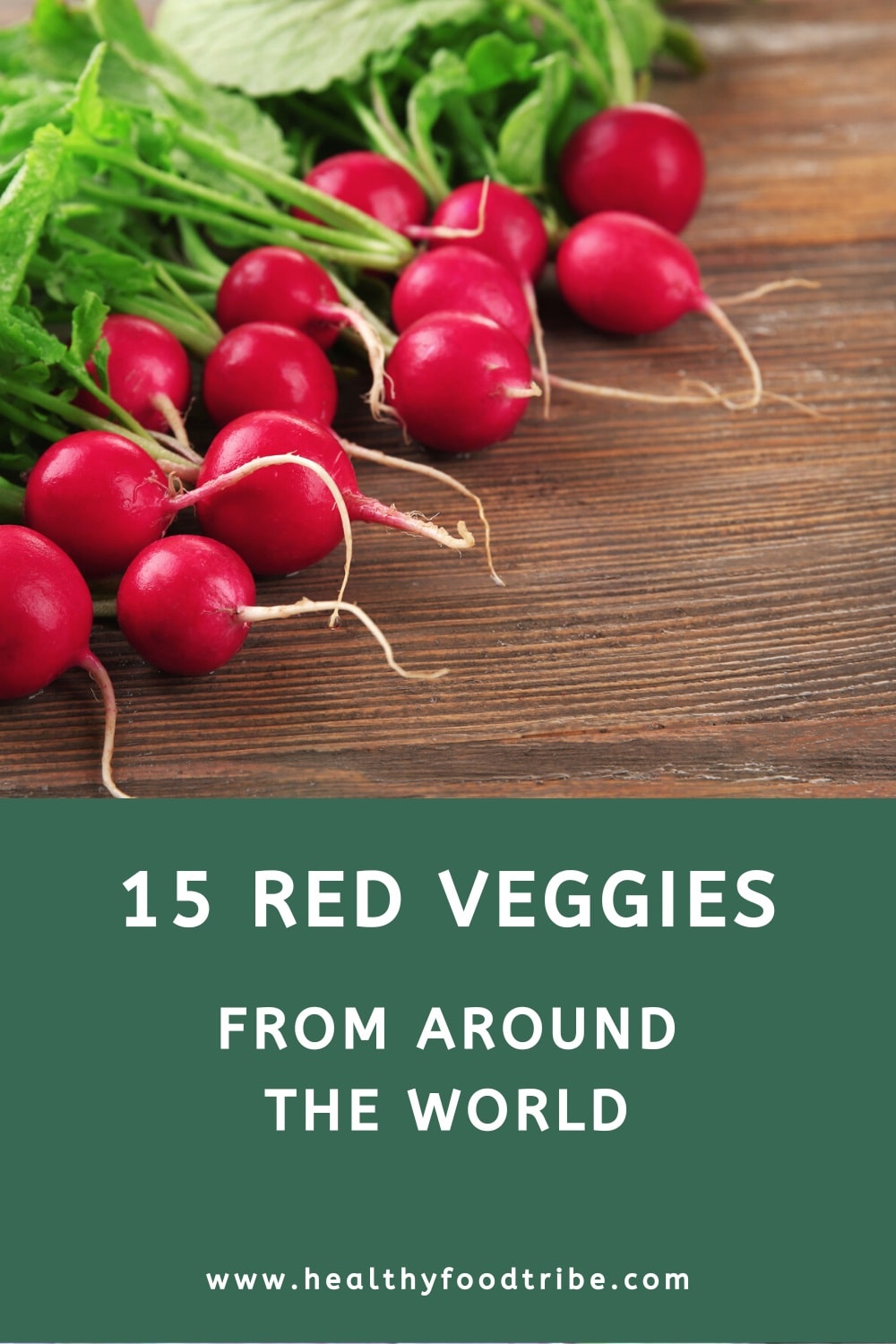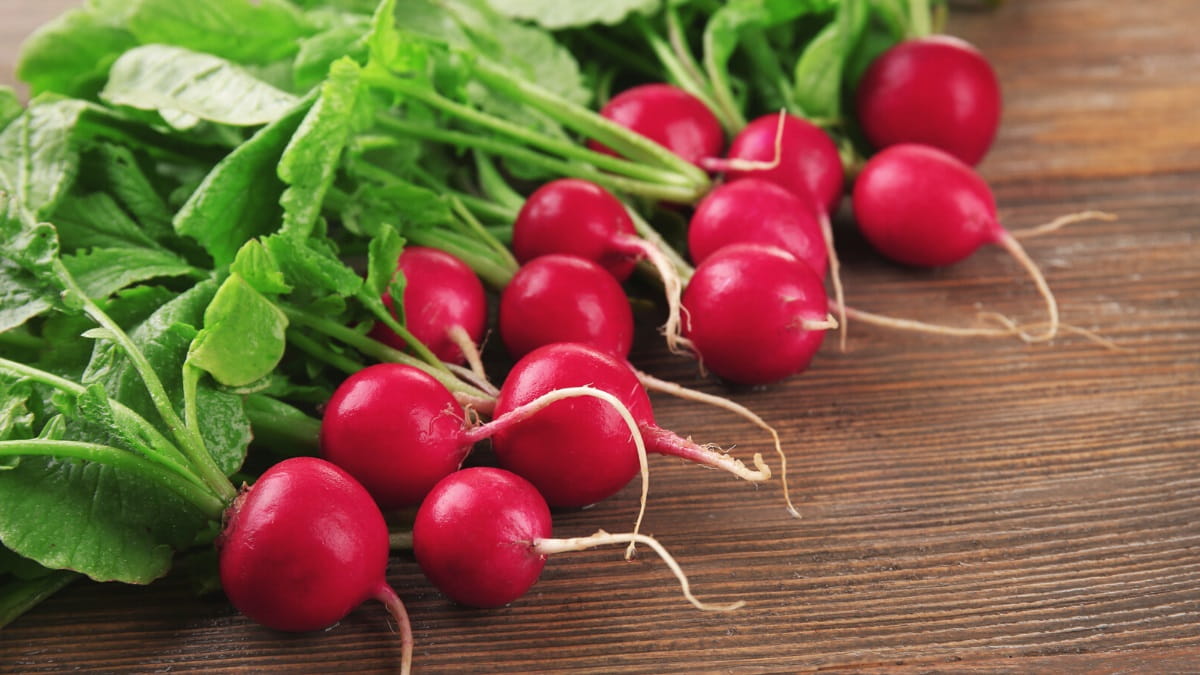Last updated: December 5, 2023
A list of 15 of my favorite red vegetables from around the world, each with unique flavors, shapes, and nutritional profiles.
As a passionate food enthusiast, I’ve always been intrigued by the vibrant colors nature paints our fruits and vegetables. Among these, red vegetables hold a special place in my heart.
Red vegetables are a great way to add color to any plate. From salads to pasta to pie, these bright veggies bring visual appeal and a host of nutrients.
In this article, I will shortlist my favorite 15 red vegetables, both popular and obscure ones, that are worth hunting down in the produce section.
Top 15 Red Veggies
In no particular, discover these fifteen tasty and versatile red veggies, including practical tips on preparing and serving them.
1. Beets

In terms of the sheer amount of red pigment, beets certainly top the list. These root vegetables are so flush with red juices that they are often used as a natural dye and can stain your fingers just from cutting them.
All this reddish-purple goodness is thanks to the addition of red betacyanin pigments on top of the typical carotenoid pigments found in many red fruits and vegetables. These extra antioxidants mean that beets pack a serious punch in the nutrition department.
While sweeter than most vegetables, they are still low in calories and make a great nutritious snack. Red beets can be used raw in salads, roasted, or sauteed. They also make a great addition to fresh homemade juices.
Read my guide to purple veggies for more of these bright-colored vegetables.
2. Red Cabbage
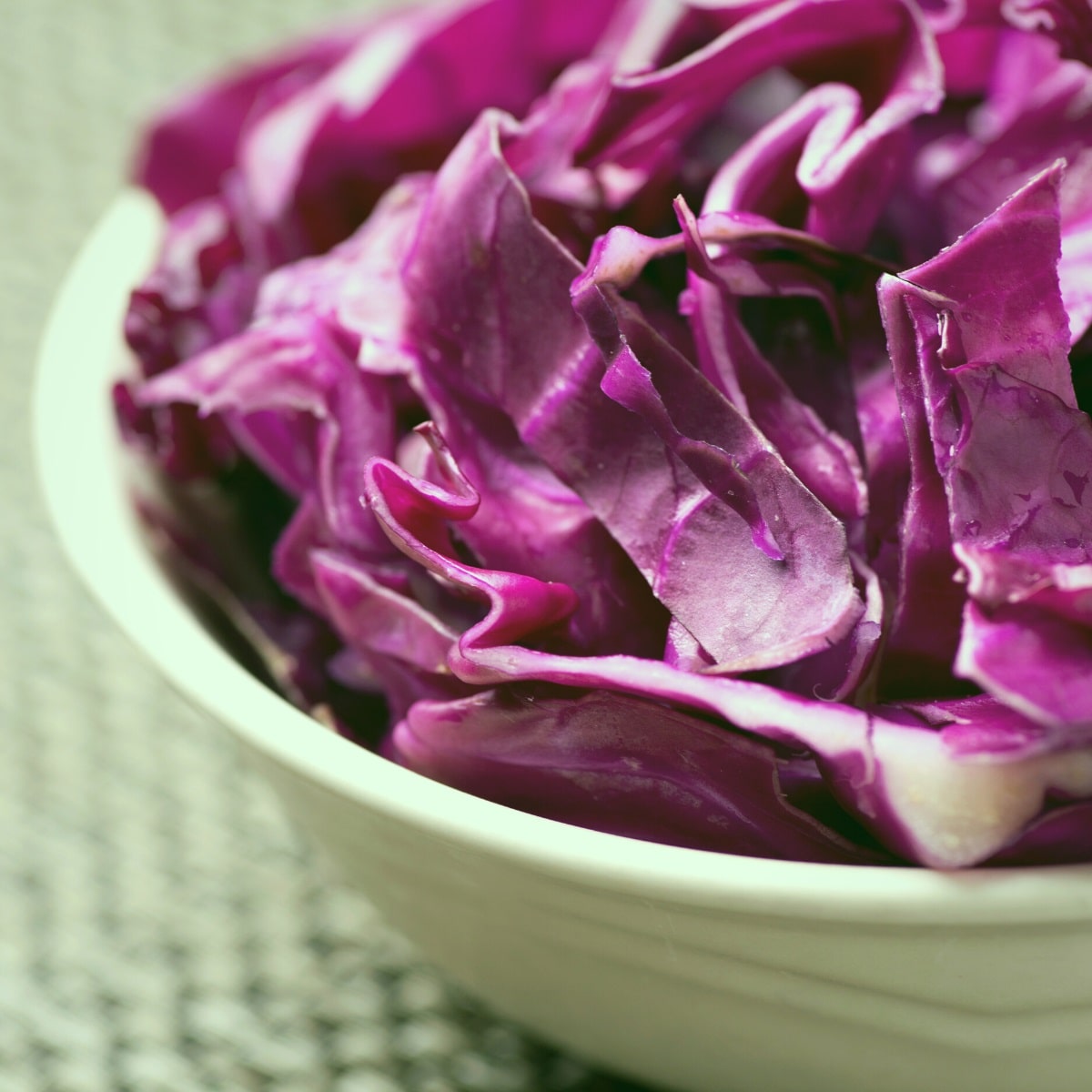
Red cabbage is another deep reddish purple vegetable that owes its color not to carotenoids, but to pigments called anthocyanins. These unique chemicals create a bluish-purple hue that is somewhat rare in the natural world.
While some red cabbage appears purple, other heads take on a true red glow. That’s because anthocyanins are highly reactive to acids in the soil. In acidic dirt, cabbage turns red, while in neutral soil, it takes on a purple hue.
Whichever color your cabbage head reflects, know it is still a great source of many vitamins and minerals. Red cabbage is loaded with vitamins C and B6, iron, and magnesium.
Cabbage is often used raw in salads and slaws or fermented to make sauerkraut and kimchi. But it can also be sauteed and used in soups, though this is less common with red cabbage than green.
3. Tomatoes

There are over ten thousand different varieties of tomatoes. Most of those are red, but these popular veggies also come in purple, yellow, green, pink, and black.
Red tomatoes may be common, but that doesn’t make them any less valuable. Nutritionally, red varieties contain more lycopene (a natural pigment and antioxidant) than other types. In general, tomatoes are high in vitamins C and K1, potassium, and folate.
Red tomatoes, which originated in the Americas, are used in a variety of ways in the kitchen. They are most often consumed raw in salads or as a topper, but they can also be sauteed, roasted, blistered, or pureed into sauces.
Read my guide to yellow veggies for more delicious brightly colored vegetables.
4. Red Bell Peppers
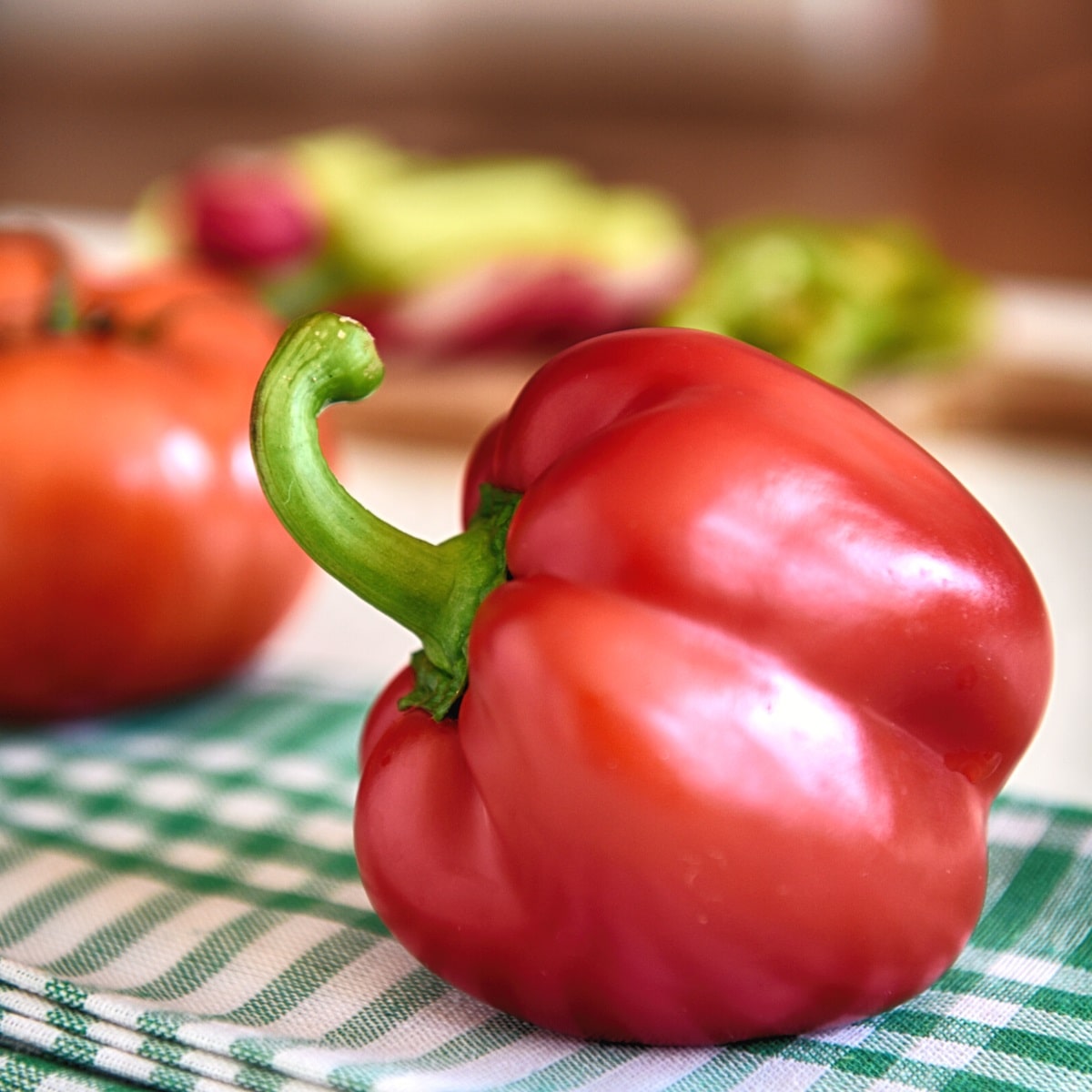
Red bell peppers are the mature form of most types of green bell peppers. But not all green peppers will turn red. The variety of pepper determines whether it matures to yellow, purple, red, or orange.
All bell peppers are an excellent source of vitamin C, but the red variety has the most, with over 300% of your daily recommended intake. Red peppers also have the most antioxidants in the form of carotenoid pigments.
Peppers originated in Central America, but the sweet bell pepper didn’t come into existence until the early 1900s. This unique cultivar contains no spicy capsaicin and belongs to a category called sweet peppers.
Red bell peppers can be eaten raw, grilled, roasted, sauteed, and even stuffed and baked.
5. Red Radish
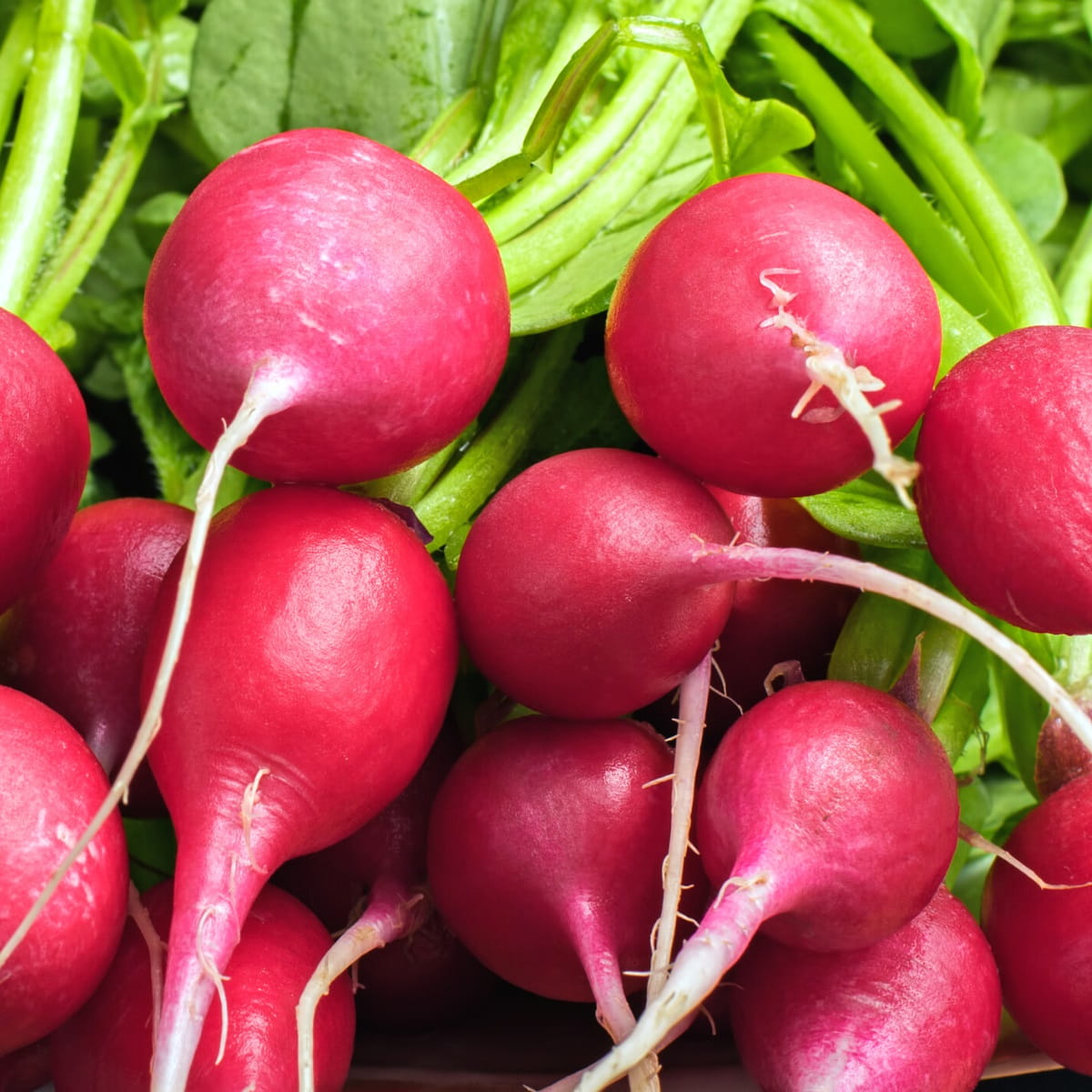
Radishes are a type of bulbous root vegetable with a sharp, peppery taste. The red radish is the most common and has red skin with dense white flesh. Radishes can also be yellow, pink, purple, and white.
These crunchy roots are native to Southeast Asia, though there is little evidence to explain when and how they became domesticated. Most likely, wild forms were traded around the world in pre-Roman times and cultivated in various forms throughout much of history.
Radishes are a good source of vitamin C. They also contain a long list of different vitamins and minerals in various amounts, including riboflavin, calcium, zinc, and manganese.
The delicate yet spicy flavor of red radishes does not hold up to heat well. Radishes are therefore usually served raw in salads, as a topper, or in slaw. They can also be pickled for a deliciously zesty take on the common pickle.
6. Red Chili Peppers
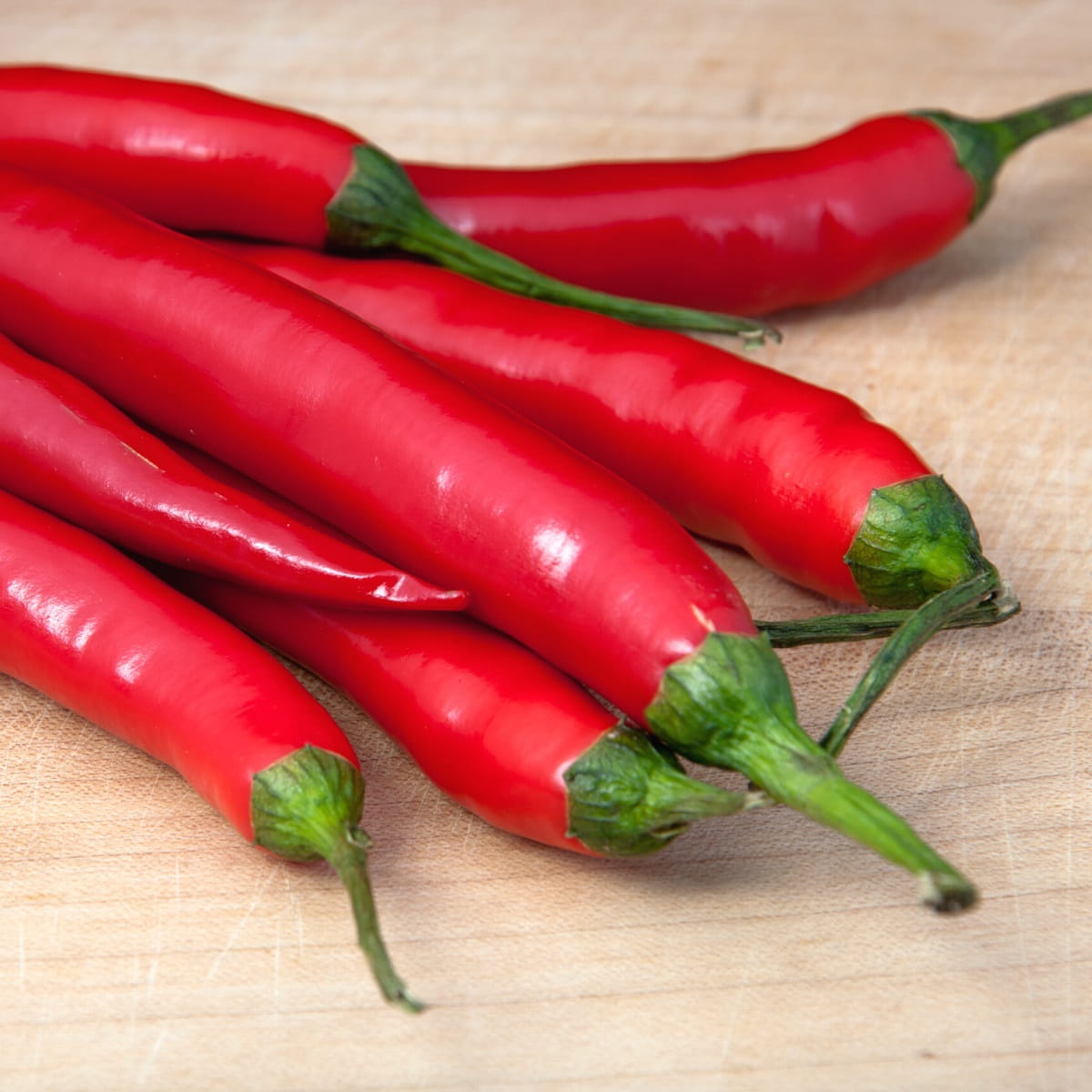
Chili pepper is the technical term for all edible peppers in the Capsicum genus. This includes sweet peppers like bells and super hot varieties such as ghost peppers. The word chili comes from the name of the plant, “chilli”, in the Nahuatl Native American language.
There are many red varieties of peppers in the world. But when most people say “red chili peppers”, they’re referring to hot red peppers, typically those with a thin, elongated shape. These include cayenne, serrano, and chipotle.
Red chili peppers are a staple of Mexican cuisine but are also popular in Asian, Indian, and African dishes. These veggies can be dried and used as spices, or cooked into the meal for an added bite.
7. Radicchio
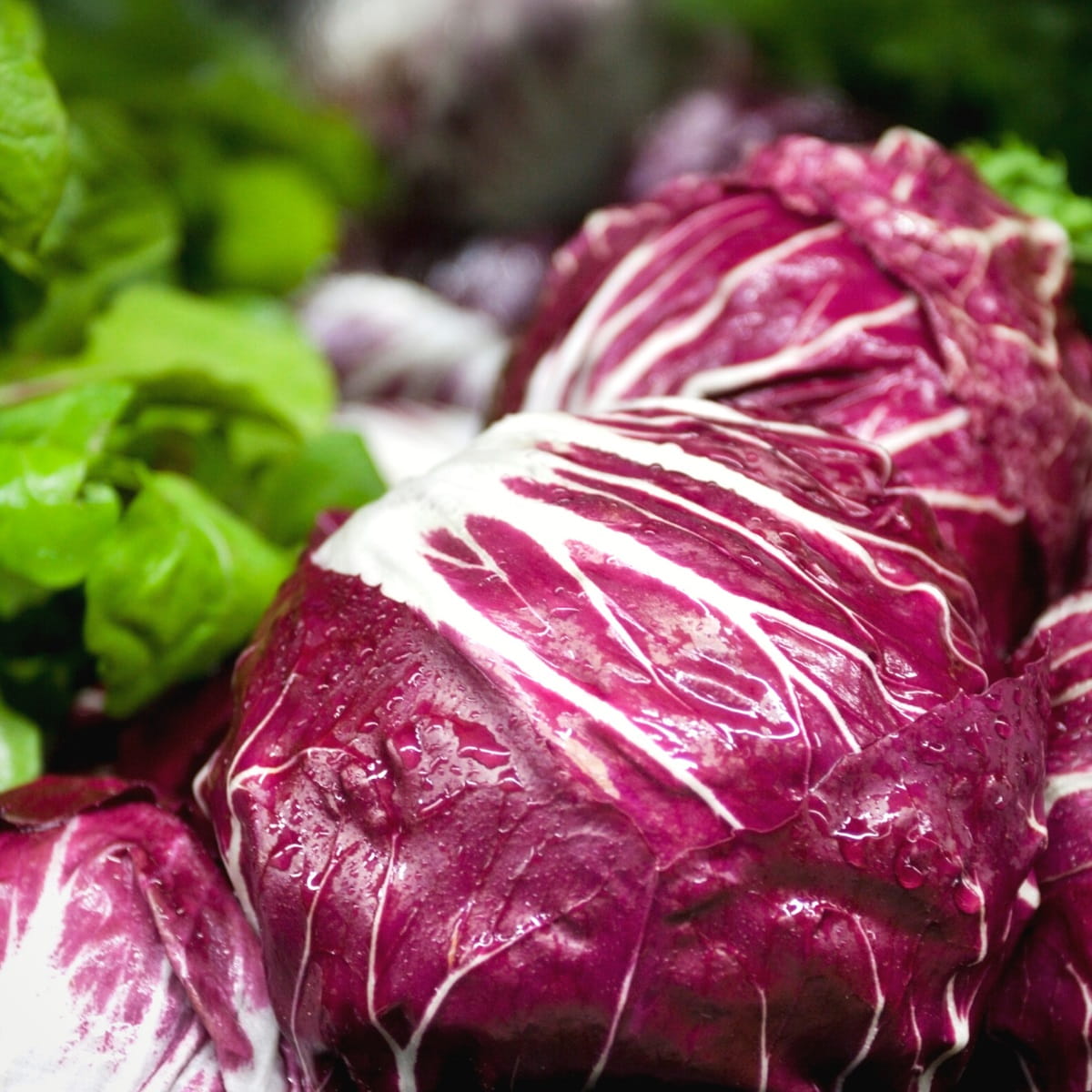
Radicchio looks very similar to red cabbage, especially the round-headed varieties. But these plants are not actually related, a fact that is evident by their differing flavors.
Cabbage has a slight pepperiness that mellows to sweet when cooked. Radicchio, on the other hand, is boldly bitter and a touch spicy. It gains some sweetness when cooked but doesn’t lose its bitter kick.
The dark red-purple radicchio leaves grow around a ball-like or elongated compact head. The most popular varieties have stark white veins stretching through the colorful leaves. This look is accomplished by cutting off sunlight to mature heads to reduce chlorophyll formation.
This veggie, which originated in Italy, gets its dark pigment from anthocyanin. Radicchio is known to be high in iron, zinc, copper, and vitamin K.
8. Red Leaf Lettuce
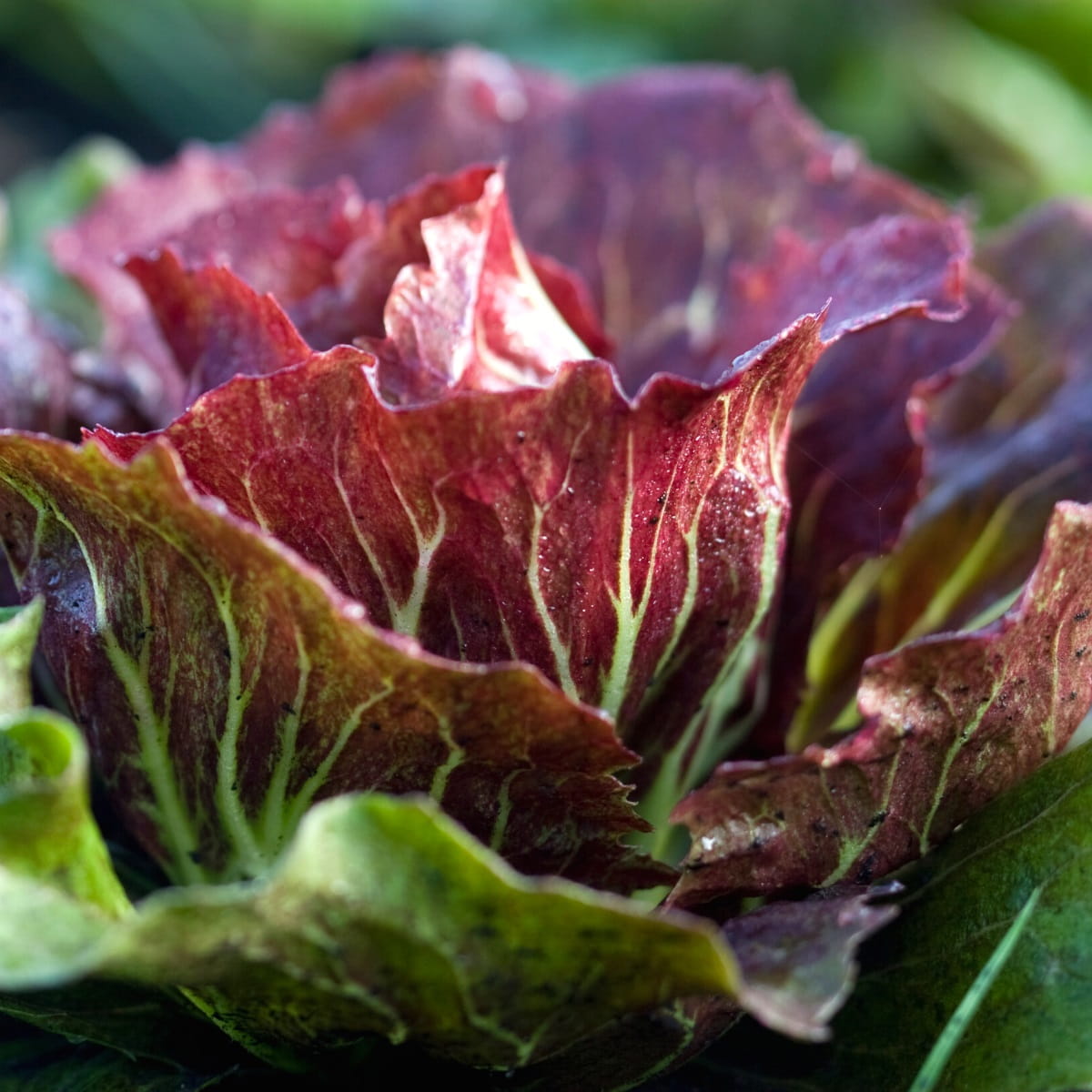
Red leaf lettuce is a term used to describe any variety of leafy lettuce that has a distinct reddish or purple color. The most common varieties include red romaine lettuce, red sails, red oakleaf, and red coral lettuce.
Compared to green varieties, these red-hued leaves tend to be slightly more bitter and earthy. They contain anthocyanins that give them their hue and add an extra dose of anti-inflammatory goodness.
Lettuce was first cultivated in Egypt over four thousand years ago. It was originally harvested for its seeds, which were made into oil. Eventually, the plants were selectively bred for their edible leaves, paving the path for the lettuces we eat today.
Red lettuce is used in all the same ways as green. It makes a festive addition to salads, works well as a topper, and makes for an eye-catching garnish.
9. Rhubarb

There are many fruits that we consider vegetables due to their culinary uses. But rhubarb is one of the few vegetables that is used as a fruit in the kitchen.
Rhubarb plants consist of thick red stems that hold up large green leaves. The leaves are poisonous, but the red stems are not. These stems have a texture like thick celery, though less fibrous, and a tart flavor like sour grapes.
To mellow this flavor, rhubarb is almost always mixed with sugar when used in dishes. Rhubarb pie is the most common recipe that utilizes this odd plant. But you can also use these rosy stems to make jam, marinades, cocktails, and more.
10. Red Onion
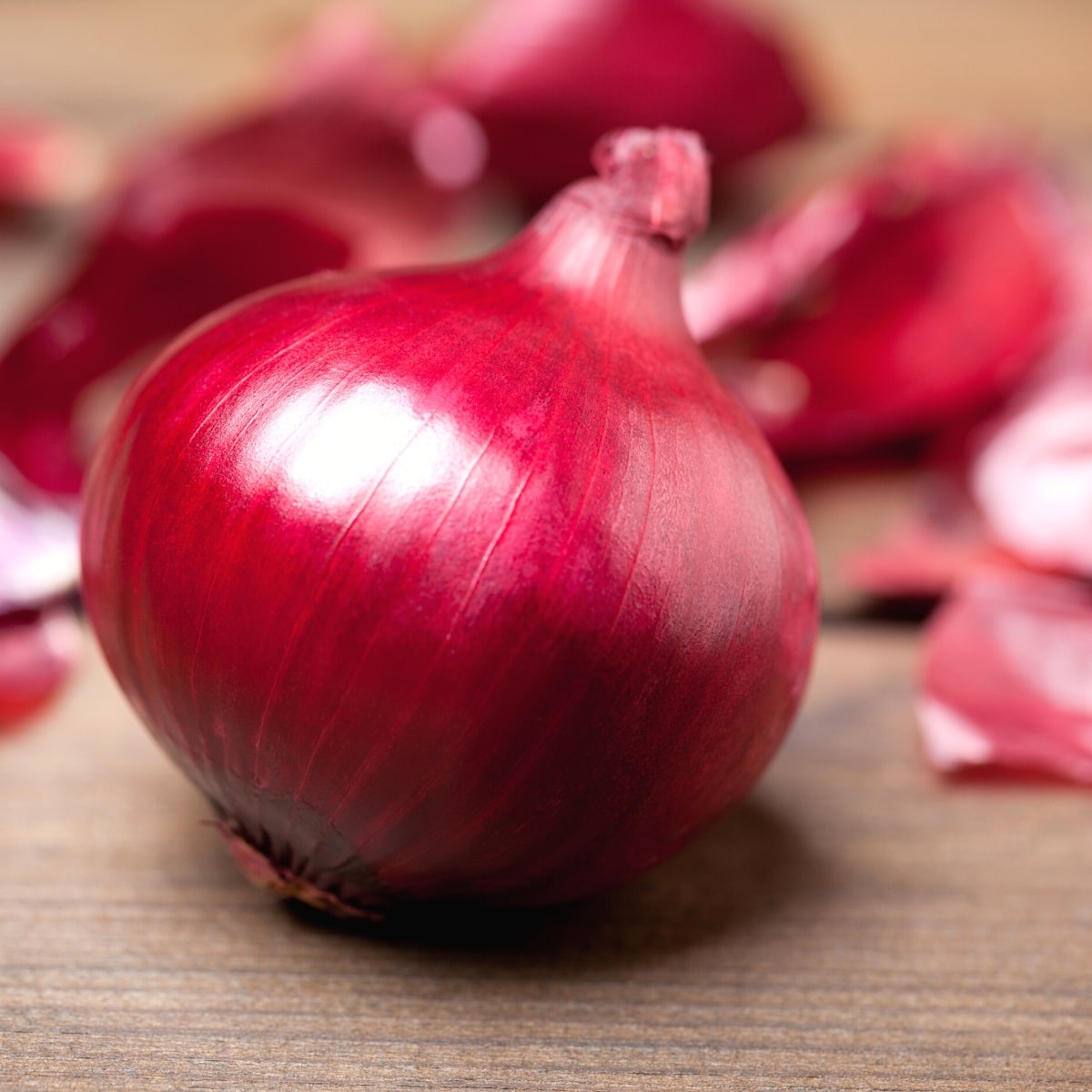
Red onions are a cultivar closely related to yellow and white onions. This variety has dark purple-red skin and white flesh tinged with pink.
Compared to other bulb onions, this one is sweeter, with less sulfur and acid in its composition. This makes red onions the best candidates for dishes that call for fresh onion. They can also be lightly cooked, but their delicate flavor is more likely to be lost than the sharp, pungent flavors of yellow or white onions.
Onions are native to Central Asia and were foraged by humans long before agriculture developed. But red onions are a fairly modern invention. These rouge-skinned alliums were created three separate times throughout recent history and have origins in Italy, the US, and Romania.
11. Red Potatoes
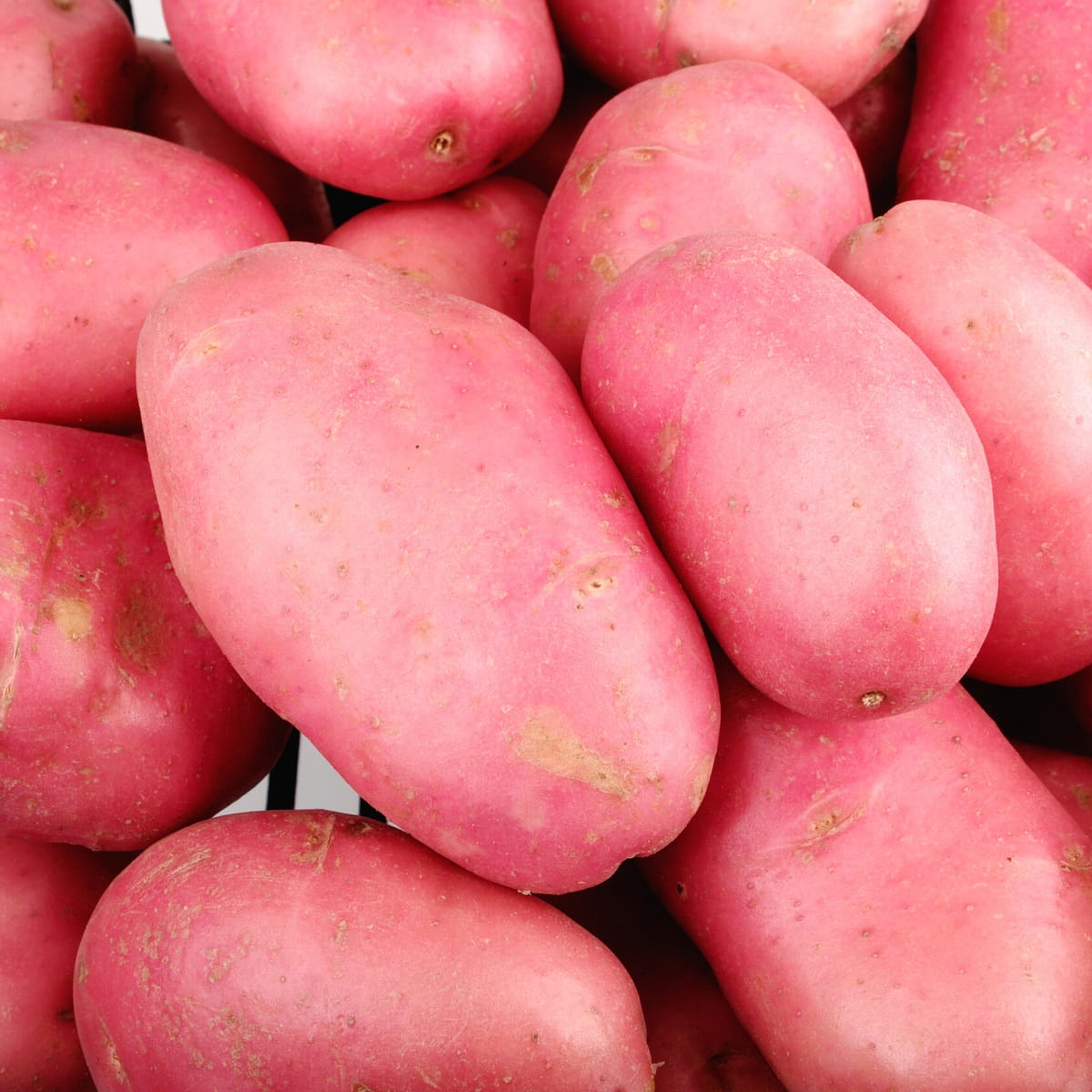
Red potatoes are small to medium-sized cultivars with waxy red skin and creamy white flesh. These dense potatoes have a pleasant, buttery, slightly earthy flavor, and contain less sugar than other potato varieties.
The waxy skin of red potatoes helps protect the texture during cooking. They are great for boiling and make a nice base for potato salad and soups. They can also be roasted and mashed, though they aren’t as starchy as Yukons.
Potatoes originated in the Andes mountains of South America. Here, potatoes were always small in size due to shorter year-round day lengths. Once potatoes made it to Europe, their potential for creating larger tubers was realized during the long days of the northern summer.
12. Red Carrots
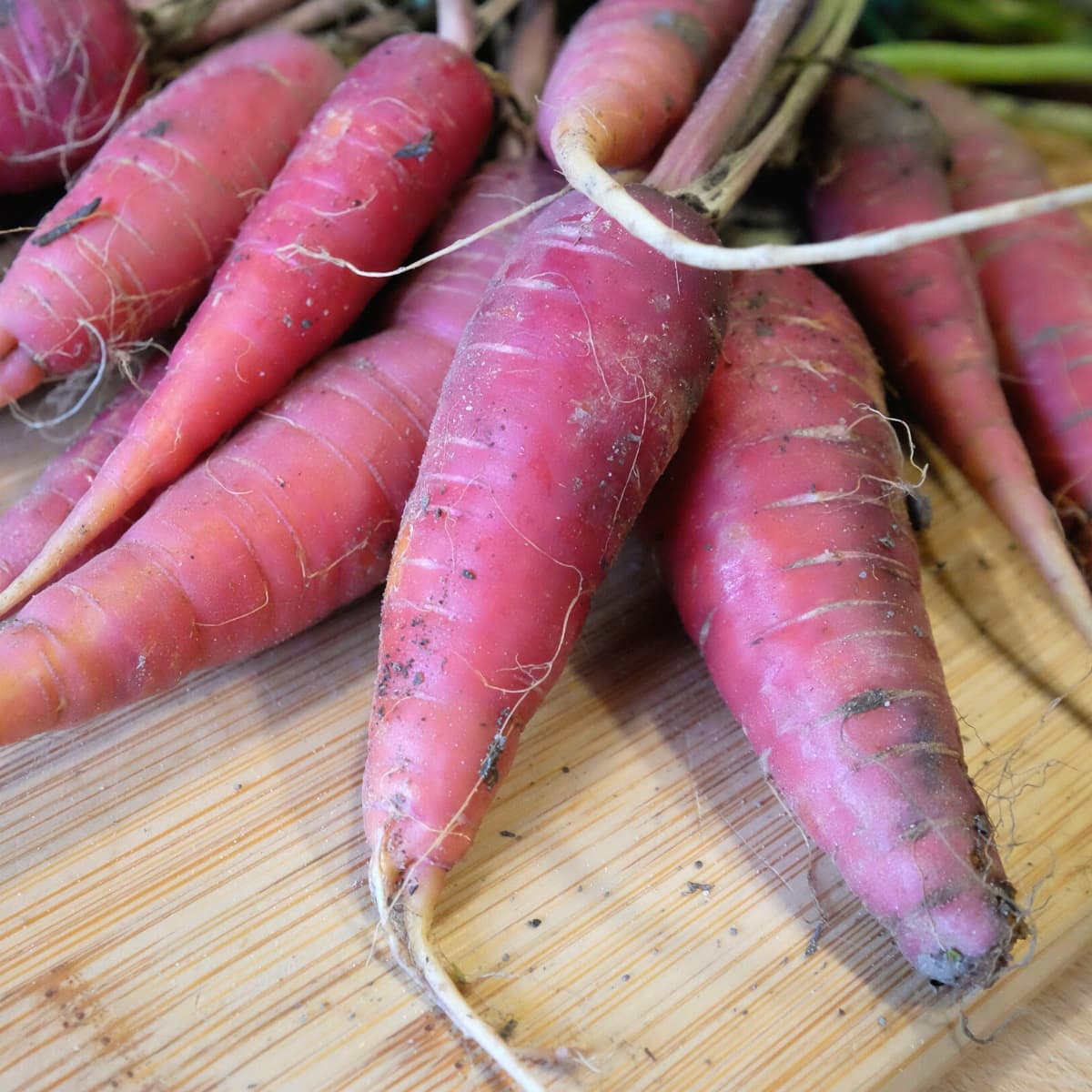
Carrots may be famous for their orange color, but these roots actually come in a variety of hues, from white to yellow to black. In fact, orange carrots are a relatively new development.
These dense, crisp, elongated taproots were most likely white before humans got ahold of them. Thousands of years ago in Persia, humans started cultivating carrots, unlocking a number of recessive color genes. One of the first of these colors to come out was reddish purple.
Today, there are dozens of heirloom varieties of red carrots. Some are bright red, while others are maroon to dark purple.
Red carrots are used for many of the same applications as orange ones. Some varieties, like Kyoto reds, have a sweet, fruity flavor that makes them especially good for snacking on. Red carrots can also be used for grilling, steaming, and roasting and will not lose their color when exposed to heat.
Ever tried back carrots? Read my guide to black vegetables to find out more.
13. Cherry Peppers
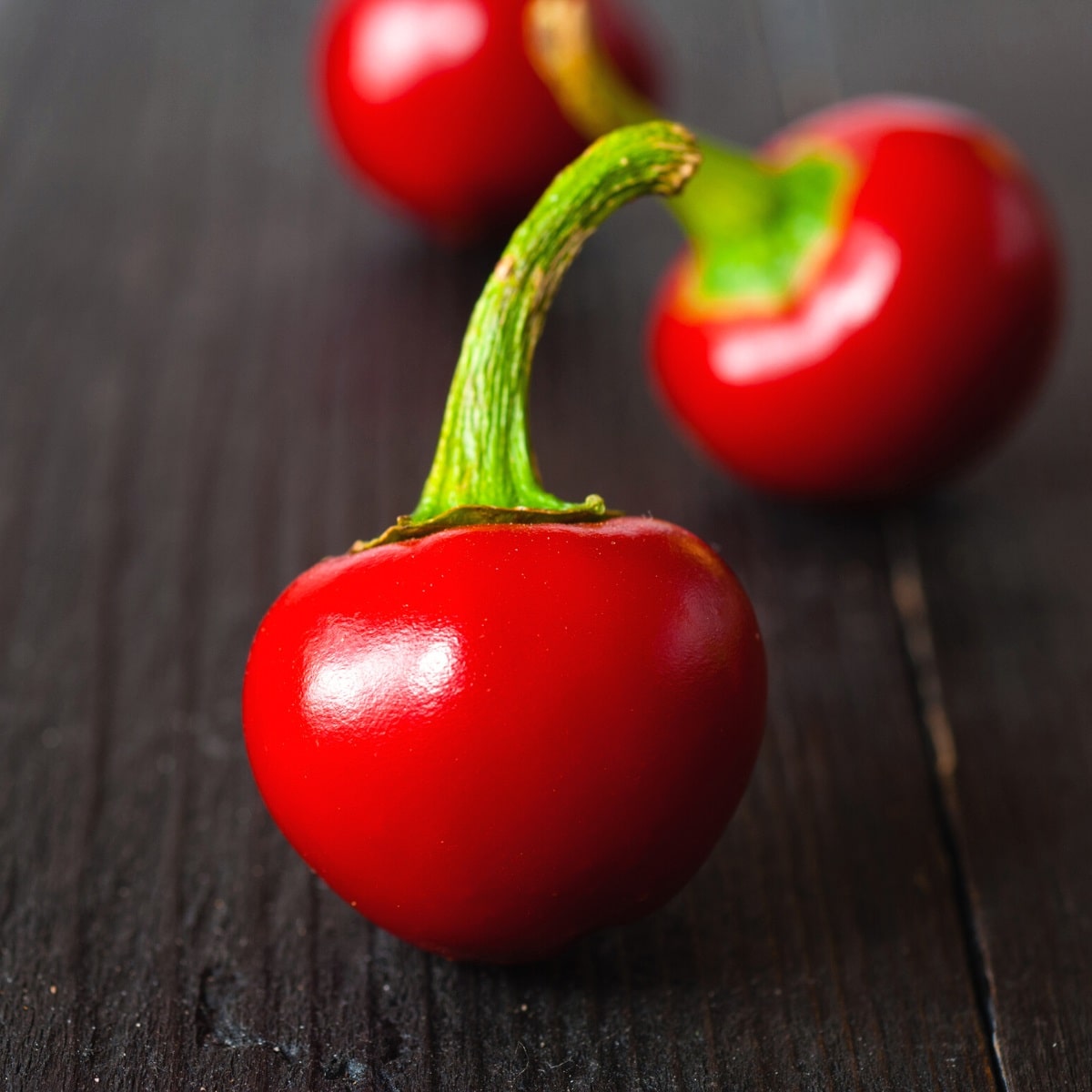
Cherry peppers are a type of red chili pepper. They are small and round, resembling a cherry with a thick green stem. Most varieties are red when mature, but yellow, maroon, and orange varieties also exist.
These peppers aren’t overly hot but do carry a bite similar to mild jalapenos. They are often confused with pimentos, which are similar-looking sweet peppers used to stuff olives. You won’t find cherry peppers used for stuffing, but you will find them stuffed with soft cheeses on antipasto platters.
Other ways to use cherry peppers include pickling them to create a spicy-sour sandwich topper and dicing them up to put in savory recipes. They can be eaten raw but are a bit too fibrous to be enjoyed this way.
14. Amaranth

Amaranth is a pseudo-cereal grain used by Mesoamericans thousands of years ago. While the grains are generally tan and look similar to quinoa, the flowers they come from are bright red to fuchsia in color. Some varieties do produce red to red-black grains that retain their color after harvesting.
This ancient grain is incredibly nutritious. It is an especially good source of many minerals, including manganese, magnesium, phosphorous, iron, selenium, and copper.
In Central and South America, amaranth is often used in soups and chili. It can be substituted for rice and quinoa in many meals and makes a great base or side dish.
15. Kidney Beans
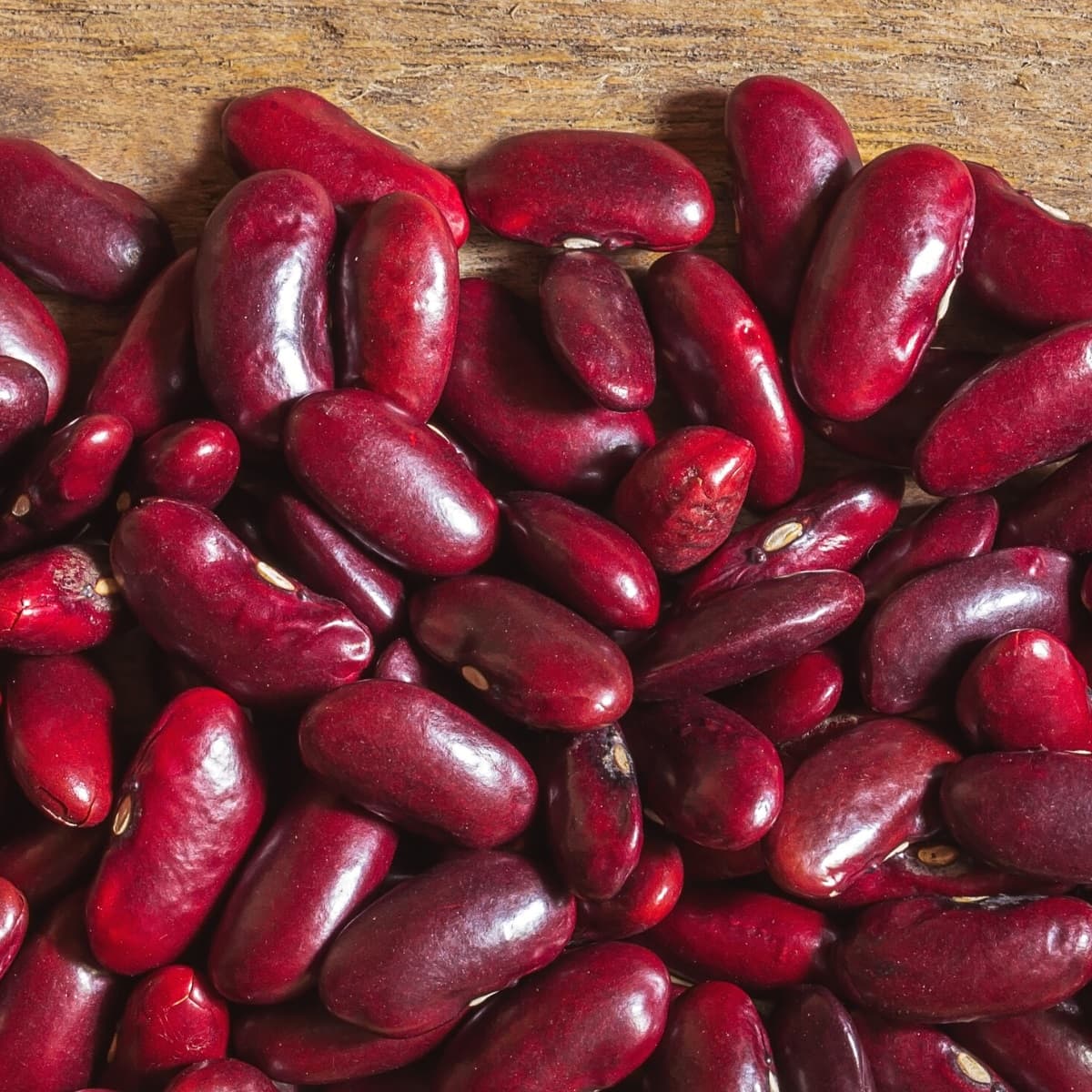
Kidney beans are a dark red to maroon-colored bean of medium size. As the name suggests, these red beans are kidney-shaped, though this shape is more apparent when they’re cooked than when dry.
These dark red beans are loaded with folate, iron, and phosphorus. They are also a great source of protein and soluble fiber.
Like other “common beans”, these ones originated in South America. They have been used by humans for thousands of years and were an important protein source for Native Americans.
Today, kidney beans are used in a variety of dishes from South America, Mexico, India, and the American South. They are popular in stews, chilis, and rice dishes.
